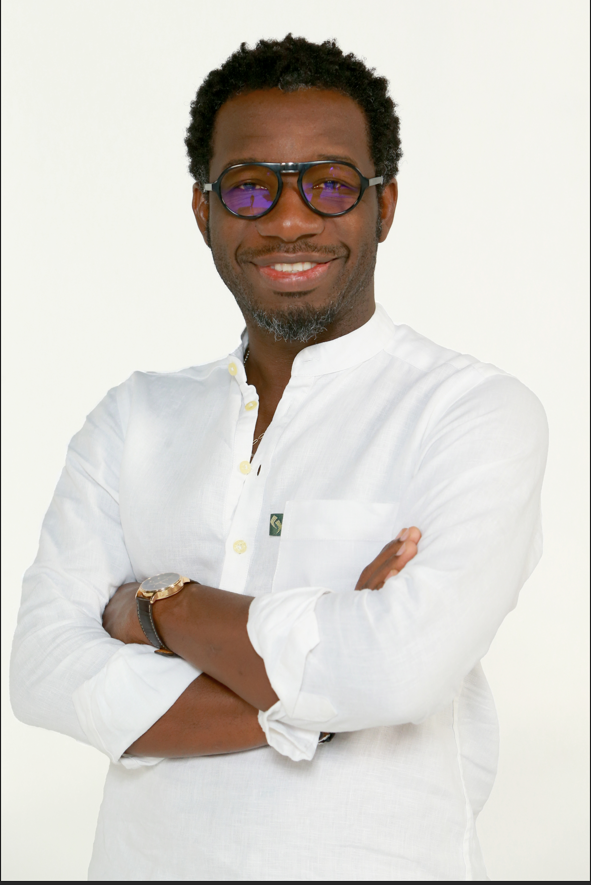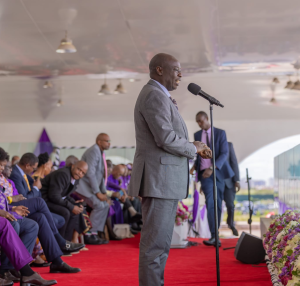Renowned portrait photographer and Canon Ambassador Seibou Traore, acknowledged for his award-winning expertise, provides insights into his artistic approach and the subtleties of capturing people through his lens.
- Considering the diverse landscape of portrait photography styles, to which style/combination of styles do you find your work predominantly aligns, and how do you believe this choice enhances your ability to convey the essence of your subjects effectively?
For me, photography and the diversity of styles are only secondary. The essential thing is to master the art of photography. Once you understand the art of photography and master the devices you use, you can effectively evolve in all styles.
The style that I choose is portrait photography. For me, portraits capture the essence of individuals’ personalities and truly reflect who they are. Within the realm of portrait photography, there’s a compelling aspect – the human exchange that takes place during the session. Photography is about transmitting emotions and messages. At a given moment, these emotions and messages can be shared between the photographer and the subject. That’s what drives me.
- Every photographer has a “got it” moment when it clicks that ‘this is what they should be doing’. When was that for you?
For me, the trigger for my love of portrait photography came when I was working at ‘La Croix Rouge’ (Red Cross) in the communications department. One thing I learned is that you should never exploit people’s vulnerability to raise funds. You must respect people’s dignity. From that moment on, I told myself that even in suffering you can maintain your dignity. And the best way to do that was through the portraits I took of children who were suffering but still managed to smile. For me, it was not about showcasing people’s misery; it was about highlighting the little dignity that people retain in the face of adversity.
- As the official photographer of the President of the Republic of Côte d’Ivoire, how has this role informed your understanding of power dynamics and representation within photography?
As the President’s photographer, I have always strived to capture his human side. Beyond his position and responsibilities, the President remains a human being, with his emotions, empathy, and role as a father, not just a figure of authority.

What particularly drew me to my boss was this human aspect that I constantly tried to highlight. During official events, my challenge was to capture a few shots that faithfully reflected the President’s emotions, in line with the theme of the ceremony. In short, I translated into images what people should remember from these solemn moments.
Attentive listening and meticulous observation proved to be indispensable tools in this experience. Spending hours alongside a figure of this stature does not guarantee an abundance of striking shots. It sometimes takes passion and insight to capture, in a split second, a unique image that sums up the very essence of an entire day. This quest demands unwavering patience and concentration, as it is crucial to be ready to seize the decisive moment at any time.
- What would you say is the important story (or stories) that you’ve captured through your lens? Is there any image that stands out for you?
One particular image stands out among the many that have left an impression on me, leading me towards photography as a career. As an intern at the Red Cross, working in communications, I was visited by my biological mother at my guardian’s home in Abidjan. I remember the scene vividly.
I had expressed my desire to my mother to pursue photography as a career. As I pulled out my camera to capture the moment, I could see the disappointment in her eyes. In our society, photography is not regarded as a viable profession, and this news came as a shock to her. Despite her initial reaction, she expressed her support for me urging me to excel.
That moment, frozen in a photograph I have since lost to a flood, serves as a constant reminder of the journey that led me to where I am today.
- What would I find in your camera bag or studio for a typical shoot? And what lighting equipment and modifiers do you favour, and why?

In my studio, I exclusively rely on natural light. If I were to describe myself as a photographer, I’d say I’m drawn to authenticity and the natural. In our country, and perhaps elsewhere, there’s a tendency to demand photographic evidence to validate stories or claims – as if a photo is necessary to prove the truth. This inclination has led me to distance myself from excessive digital manipulation.
Around 20% of my photos involve adjusting light placement to ensure a natural outcome. This is why I avoid using Photoshop entirely. I believe that mastering the camera provides all the necessary elements for capturing genuine moments.
In my studio, I have lights that simulate daylight and flashes positioned strategically. I use two flashes on the side, one at the back, and ambient lighting for overall illumination. I also have a variety of backgrounds to choose from for different photo shoots.
- Can you recount a time when a photo shoot didn’t go as planned? How did you adapt, and what was the outcome?
During a photoshoot, there was an incident where my assistant had put the flashlight on the tripod without counterweights. Unfortunately, the camera fell, rendering the flash unusable. However, relying on our knowledge of photographic lighting, we improvised. We opted not to increase the ISO to avoid compromising image quality and aimed to capture as much of the sunset light as possible. It was very rough, but the result was perfect.
- How has social media shaped the realm of photography, both as a craft and more generally, for your work?

I’m not particularly active on social media networks. While they’ve encouraged creativity and pushed people to take more photos, they have broken the golden rule on photography. That is the private and personal side of photos.
However, I’m beginning to use social media networks because I want to make a positive impact, not just influence people. My goal is to see tangible results particularly when participants in my training programmes share their progress and express satisfaction with their learning experiences. It makes me happy to see their growth and improvement over time.
What holds me back from fully embracing social media networks is the tendency of some young people to prioritise gaining followers over meaningful content. I am hesitant to immerse myself in its mass usage due to this trend. However, if I do engage with social networks, it will be to share valuable knowledge and make a positive impact on those who seek to learn and grow.
- Where is your photography going – are there any ideas you wish you had time to act on but haven’t yet?
After teaching myself photography through books and personal encounters, I realised that young people shouldn’t face the same struggle. They deserve a structured learning environment to master this profession effectively. My photography journey is driven by a commitment to transmit education and values.
I prioritise respecting the dignity and privacy of subjects and understanding the weight of a single photograph’s impact on individuals’ lives. Despite navigating between different institutional settings, I have maintained a steadfast dedication to neutrality and integrity. Alongside this, I am deeply vested in personal projects addressing pressing issues like climate change, violence against women or children, and deforestation, seeking to effect meaningful change through visual storytelling.
I don’t hesitate to give my opinion when it comes to situations that touch me, especially when I believe we can do and should do more. That’s essentially where my photography is heading today – it’s photography that aims to make an impact, not to harm people but to influence them.






More Stories
DP Gachagua Leads Response Efforts in Flood-Affected Garissa County
Sophos Report Reveals 500% Surge in Ransom Payments for Data Recovery
Deputy President Rigathi Gachagua Emphasizes Workers’ Role in Bottom-Up Economic Agenda on Labour Day